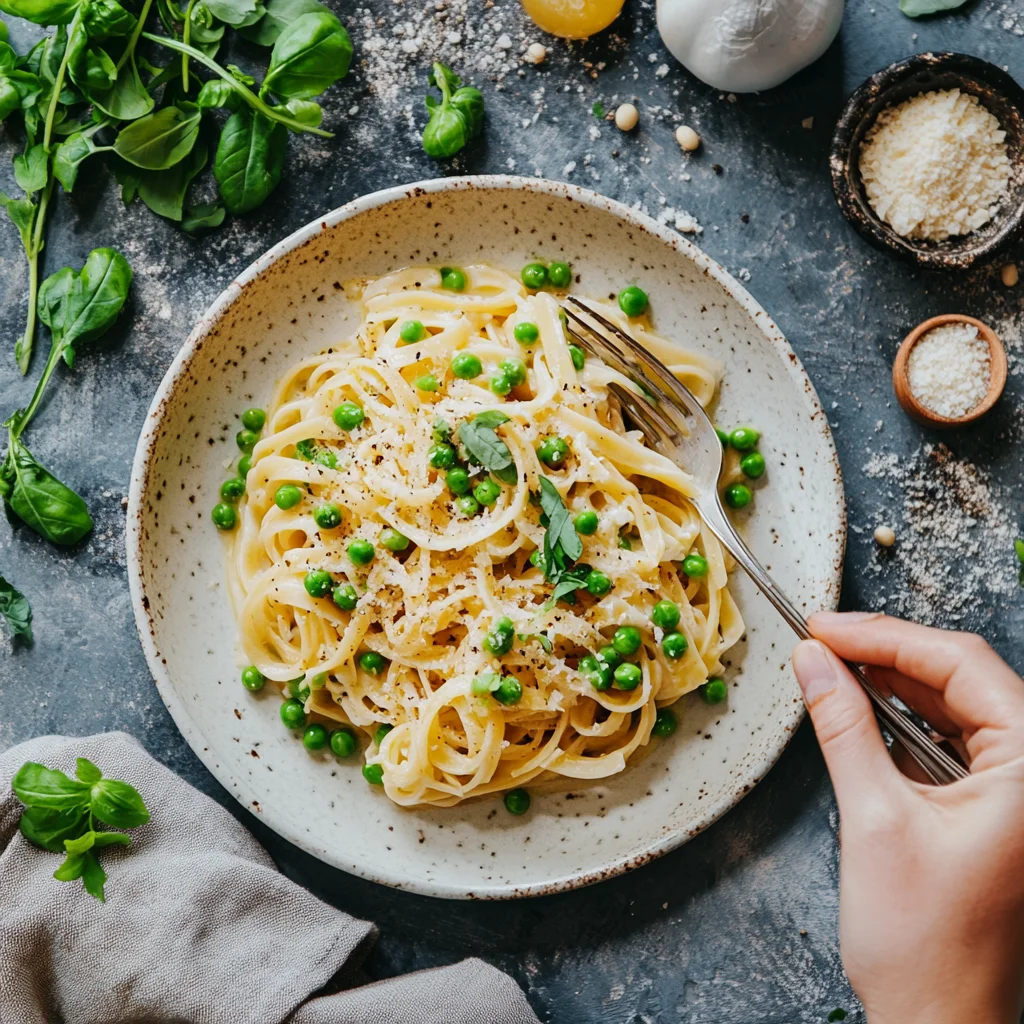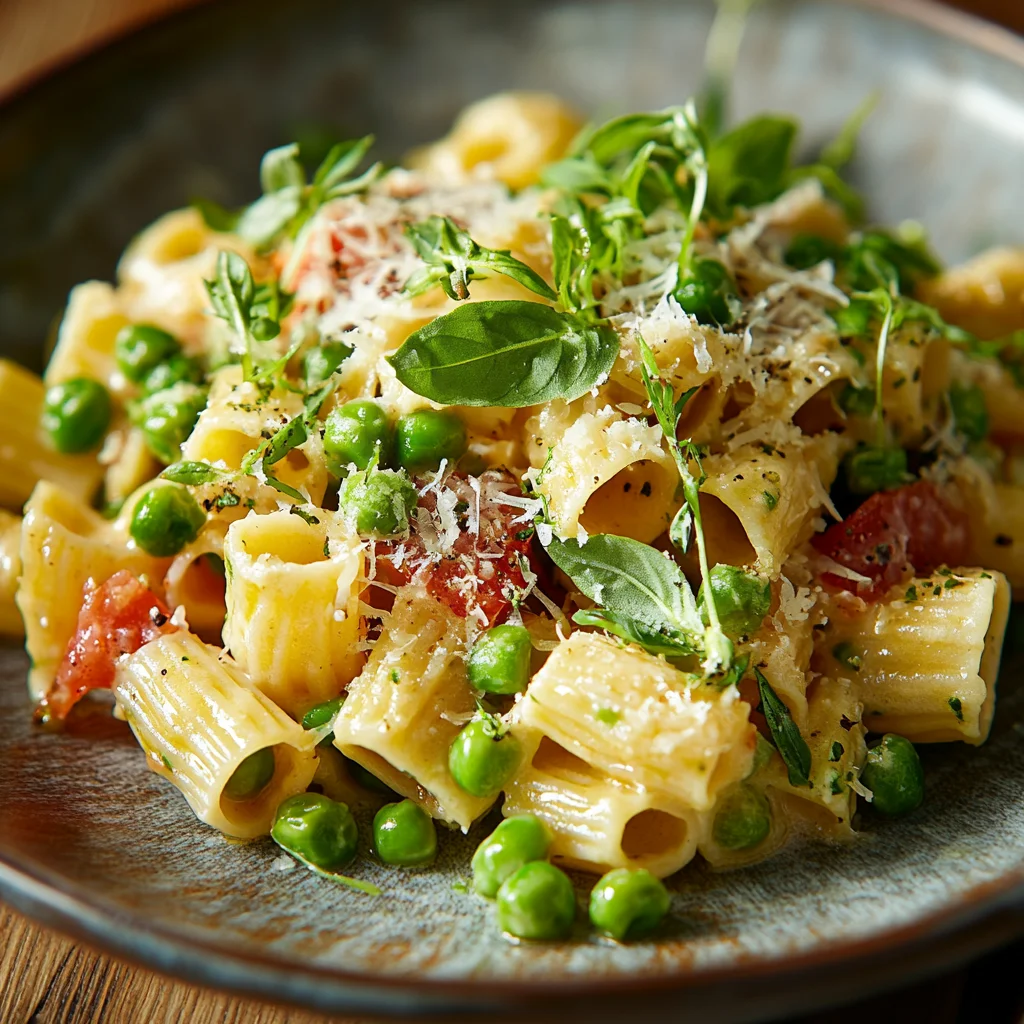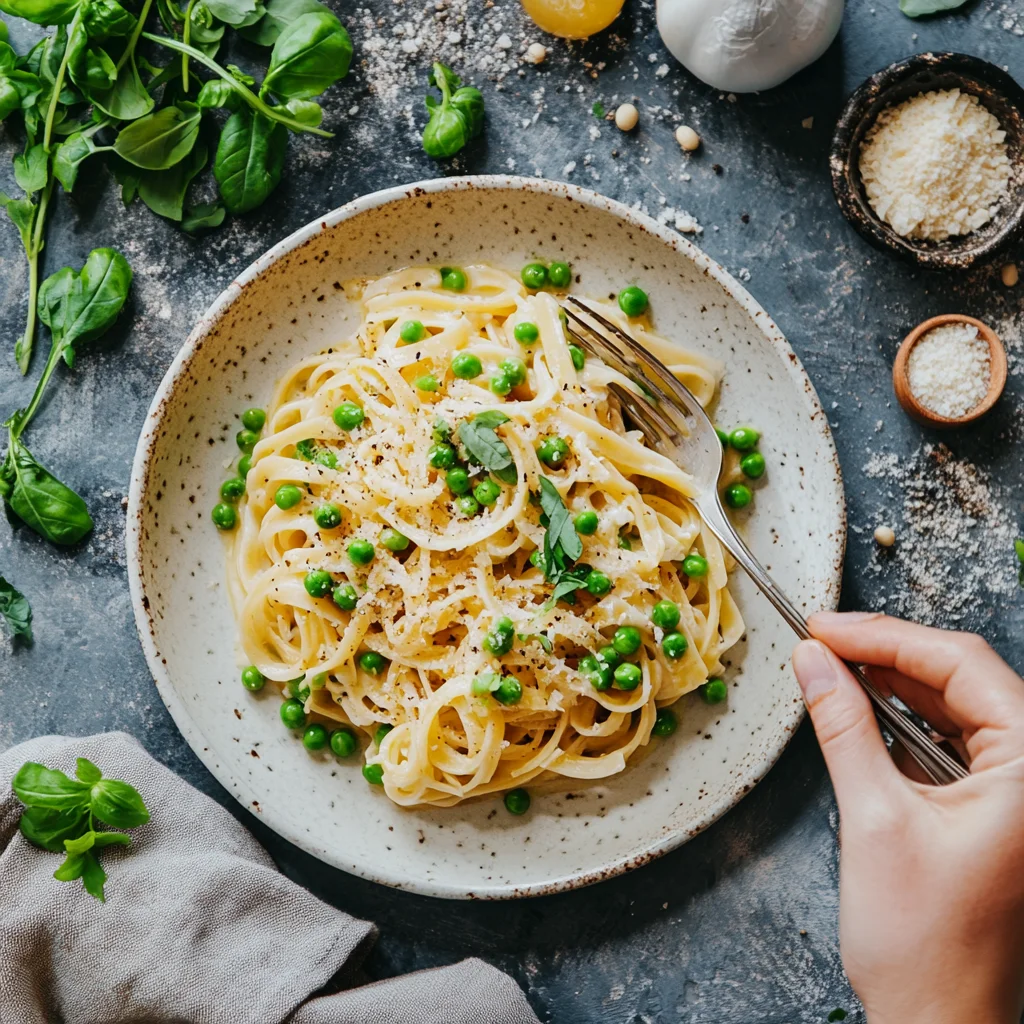 Pin it
Pin it
This spring pea pasta transforms simple ingredients into a luxurious weeknight meal that celebrates the season's freshest produce. The combination of sweet peas, savory parmesan, and silky cream creates a restaurant-worthy dish that requires minimal effort.
I discovered this recipe during a particularly busy spring when I needed quick dinners that still felt special. Now it's my go-to dish when I want to impress dinner guests without spending hours in the kitchen.
Ingredients
- Small pasta like ditalini: The smaller shape catches the sauce and peas in every bite
- Olive oil and butter: Creating the perfect base for sautéing with rich flavor
- Fresh or frozen peas: The star ingredient bringing sweetness and spring freshness
- Leek: Just the light green and white parts add a delicate onion flavor
- Garlic: Adds aromatic depth that complements the sweet peas
- White wine: Deglazes the pan and adds acidity to balance the cream
- Broth: Enriches the sauce with savory notes
- Heavy cream: Creates silky texture and luxurious mouthfeel
- Parmesan cheese: Brings salty umami flavor and helps thicken the sauce
- Fresh herbs: Basil and chives brighten the finished dish
Step-by-Step Instructions
- Prep Your Aromatics:
- Trim the leek keeping only light green and white parts. Cut lengthwise twice to create quarters then slice into small pieces. Thoroughly wash to remove any grit hiding between layers. Finely chop garlic cloves. Having these ready keeps the cooking process smooth once you start.
- Cook Pasta:
- Bring a large pot of water to a rolling boil. Add a generous amount of salt until the water tastes like the sea. Add your small pasta shape and cook until just al dente about 1 minute less than package directions. The pasta will finish cooking in the sauce.
- Create Flavor Base:
- Heat olive oil and butter in a large skillet over medium heat until butter is melted and slightly bubbling. Add leeks and garlic sautéing for about 5 minutes until they soften and become translucent but not browned. Season with salt and pepper to build flavor from the beginning.
- Develop The Sauce:
- Pour in white wine and broth stirring to scrape up any flavorful bits from the bottom of the pan. Let the liquid reduce by about half which concentrates the flavors and removes the alcohol taste. Add peas and cook until tender about 5 minutes for fresh or 2-3 minutes for frozen.
- Combine Everything:
- Using a slotted spoon or spider transfer the pasta directly from cooking water to the sauce. Add a ladle of starchy pasta water which helps create a silky sauce that clings to the pasta. Toss everything together over medium-high heat for about a minute.
- Finish With Richness:
- Pour in the cream and sprinkle most of the parmesan over the pasta. Stir continuously until the cheese melts and the sauce thickens enough to coat the back of a spoon. This creates the signature silky texture that makes this dish special.
 Pin it
Pin it
The leeks are what truly make this dish special for me. While many recipes call for onions or shallots I find leeks provide a more delicate sweetness that lets the peas shine. My grandmother always used leeks in her spring cooking and this dish reminds me of her garden-to-table approach.
Choosing The Right Pasta
The pasta shape matters tremendously in this recipe. Small shapes like ditalini orecchiette or even small shells work best because they catch the peas and sauce in every bite. Longer pasta like spaghetti or linguine won't hold the sauce and peas as effectively resulting in components separating on the plate. The cooking time also matters keep it truly al dente as it will continue cooking slightly in the hot sauce.
Make It Your Own
This recipe welcomes variations based on what you have available. No leeks? Substitute a small shallot or half a sweet onion. For a protein boost add cooked shrimp or chunks of rotisserie chicken during the final step. Make it dairy-free by replacing cream with cashew cream and using a plant-based parmesan alternative. Add lemon zest just before serving for a bright citrus note that enhances the spring flavors.
Seasonal Adaptations
While spring peas create the classic version this pasta can evolve with the seasons. In summer replace peas with cherry tomatoes and add fresh corn kernels. Fall calls for roasted butternut squash cubes and crispy sage leaves. Winter versions work beautifully with roasted mushrooms and thyme. The cream sauce base remains constant while the featured ingredients change creating a template for year-round delicious meals.
 Pin it
Pin it
Frequently Asked Questions
- → What type of pasta works best for this dish?
Small pasta like ditalini or elbow macaroni works best as it complements the creamy sauce and peas perfectly.
- → Can I use frozen peas instead of fresh?
Yes, frozen peas work well. Just add them in during the final few minutes of cooking the sauce so they don't overcook.
- → What can I substitute for white wine?
You can use extra broth or a splash of lemon juice to deglaze the pan instead of white wine.
- → Is it possible to make this dish vegetarian?
Yes, use vegetable broth instead of chicken broth and ensure any additional cheeses you use are vegetarian.
- → What herbs pair well with this dish?
Basil and chives are great options, but you can also try parsley or mint for a fresh twist.